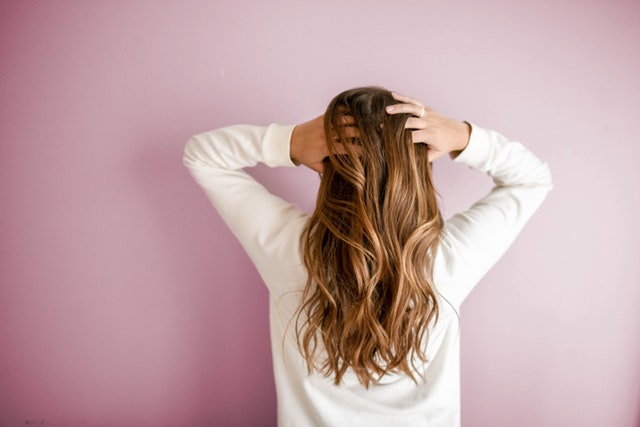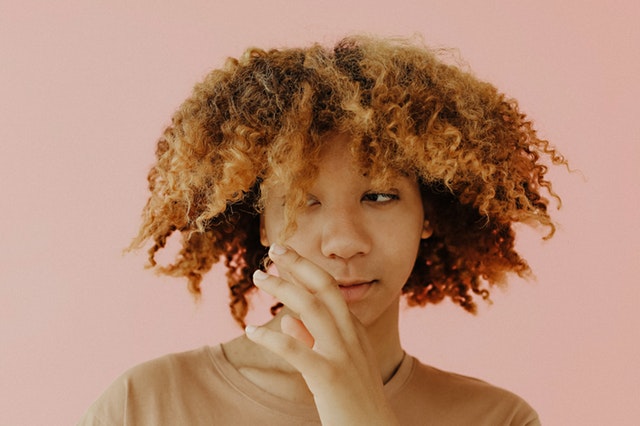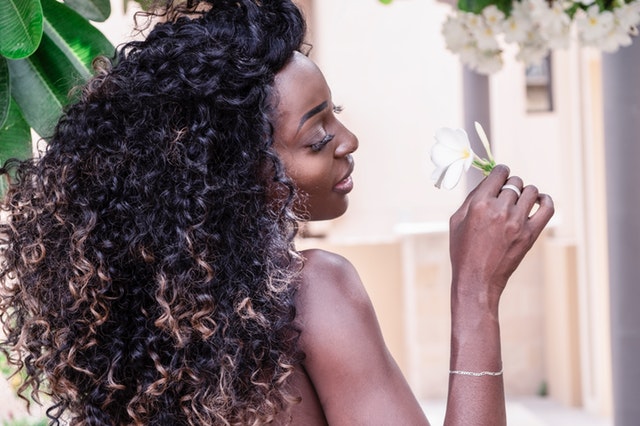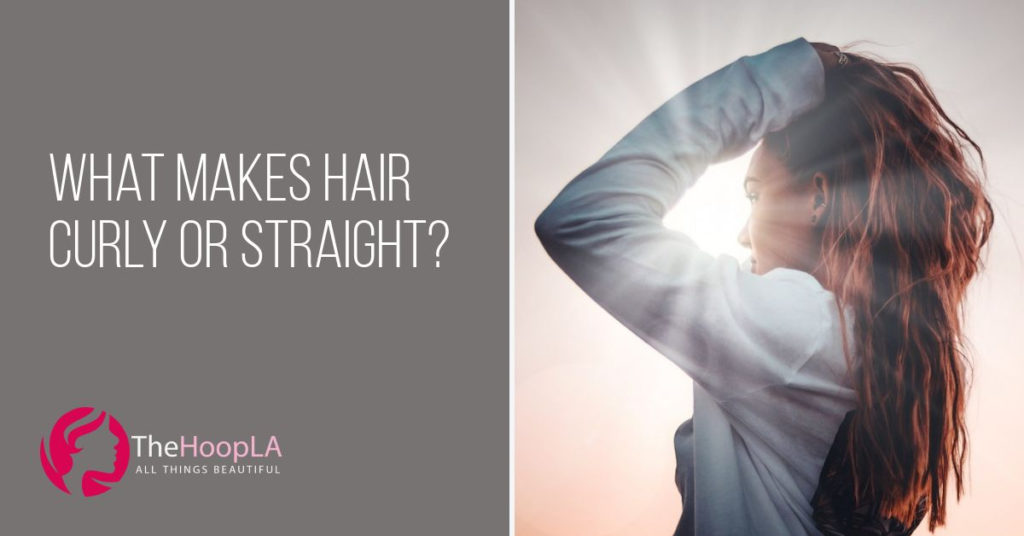There are many types of hair. Curly, straight, wavy, dry, frizzy, oily, or some combination of all. Everyone’s is different. But did you know that the biology of a hair follicle has a lot to do with the formation of your hair? These follicles shape the look of your hair during your entire life, and it can even change over time.
Your hair protects your scalp from the sun and keeps it cool in hot weather. It also keeps your head warm and helps you to retain heat in the cold. It serves a fundamental purpose beyond looking good.
Your hair follicles hide inside your scalp. They are complex mechanisms that house many cells. The shape of your hair follicles determines the texture of your hair. A curved hair follicle will grow curly hair, and a straight hair follicle will grow straight hair.
So, the question now stands: how do some hair follicles curve? What makes them that way and why?
Ever wondered what makes hair curly or straight? Could it be down to your genes or the environment and humidity you live in? Let’s look at some reasons.
Types of Hair
Not only are there many types of hair, but there are many types of curly hair. Curly hair comes in waves, twists, kinks, and crimps. They can be big curls or small curls. They can even vary throughout the same head of hair.
Some scientists in the United Kingdom from Unilever R&D and the Center for Skin Sciences at the University of Bradford try to explain how hair grows and even published an entire article explaining their research.

The shape of your hair follicles is determined when you are only an embryo. However, scientists still don’t know how this development happens. Curly hair follicles have two bends and are shaped like the letter S.
This shape remains intact for life, but your hair follicles undergo natural changes every few years with the cycle of hair growth. Every hair on your head grows for 3 to 5 years and then rests for a few months before it falls out.
In the resting phase, the hair follicle shrivels up into the skin, takes a break, and gets ready for a new cycle. To start the new cycle, it grows back in its original shape and begins growing hair again.
These curvy follicles always grow back curly. They never grow back in a different shape than before. However, scientists also don’t know how the follicle retains its shape as it shrivels in preparation for the next cycle. Simply put, naturally curly hair will always be curly.
What Makes Hair Curly?
The shape of your hair follicle isn’t the only thing contributing to your curly hair, however. Cell behavior during hair growth can also affect the way your hair looks. For instance, hair cells in straight follicles are organized and coordinated. They grow straight and round in a symmetrical fashion.
Hair cells in curly hair multiply and divide in an asymmetrical pattern, producing proteins that correlate with waves, bends, and curves in the follicle. The result is a fiber of hair that grows in an elliptical shape, allowing it to curl as it grows.
The only problem now is that scientists still don’t understand what contributes to the different curl sizes, waves, kinks, or twists that make your curly hair unique. The size and shape of your curls come from the elliptical-shaped fiber, but what controls these differences is unknown.
Curly Hair Genes
Scientists are getting closer to discovering how all of this happens. They already know that your genes have much to do with hair shape. They know that the shape of your hair follicles determines whether your hair is curly or straight.
They’ve also discovered that the main gene responsible for these curls produces a protein that strengthens your hair as it grows. This protein is called trichohyalin, or TCHH. TCHH is responsible for different hair shapes all over the world.

It contains nuclear polymorphisms that vary based on race. The particular variant that produces straight coarse hair in people of East Asian descent is located in the EDAR receptor.
Variants, or polymorphisms, in different receptors are responsible for the differences in the distinct hair types of certain races. There are a few other genes that scientists have discovered to affect hair shape as well.
The far more interesting part of all of this scientific discovery is that these genes may or may not be inherited from your parents. They could be products of your environment or a combination of both.
While scientists don’t know everything about what makes your hair curly, they’re working on it. In the meantime, there are plenty of solutions to the problem of wishing you had a completely different hair type than you do. If you have naturally curly or thick hair, sometimes you might want to try a different hairstyle for which you need a compatible blowdryer suitable for curly hair.. A quality flat iron will allow you to experiment with different hairstyles.
Best Flat Iron For Long Hair
If your hair is long, the chances are it takes a long time to style, whether it’s curly or straight. Long hair can be difficult to style at home because it takes a long time and because holding your arms above your head for that long can be tiring and even painful. The best flat iron for long hair is one that’s lightweight and has many different temperature settings, like the Babyliss Pro OPTIMA3000.
Best Straightener For Short Hair
Short hair isn’t too time-consuming to maintain because there’s not as much of it, but it can still be a pain, especially if it’s very curly, coarse, or unruly. The best flat iron for short hair is by far the GHD Platinum+ because it’s perfect for all hair types. Whether your short hair is curly, wavy, coarse, or fine, the performance of this styler will meet your needs.
Best Flat Iron For Thick Curly Hair

Thick, curly hair, no matter the length, is generally coarse and unruly. It tends not to retain that much moisture, which is what makes it so thick and frizzy. The important thing to remember when styling your thick, curly hair is you need to protect it from heat. Even though flat irons get hot, the best flat iron for curly hair is the GHD V Gold Max because it offers a single heat setting that protects your hair and styles it with ease.
Best Straightener For Fine Thin Hair
Fine, thin hair is susceptible to more heat damage than other types of hair because it’s fragile. Styling fine, thin hair requires a bit more care when it comes to heat settings, which is why the best flat iron for fine hair is the GHD Original IV. It only has one heat setting that’s much more conservative than other hair straighteners, and its basic feature set is easy to use every day without fuss.
Conclusion
Now that you have a better understanding of what makes your hair curly, you may realize that there’s not a lot from a biological standpoint that you can do to fix it. Naturally curly hair will always be curly, so you should rock your gorgeous curls whenever you can. Failing that, check out our post on how to straighten your hair now you know which straightener is best.
However, if you prefer to straighten or style your hair differently than what comes out naturally, there are plenty of great products on the market that will help you achieve this style with minimal frustration.
GHD, Babyliss Pro, Flair, and many others make hair straighteners with great features like digital temperature control and smart technology. Swivel cords, travel-ready voltage, and friendly notifications will make your use of these quality flat irons even better than you expect.
Enjoy your natural curls when you can, and get the perfect straightener for your hair type when you want to try something new. For more inspiration check out our hair section!

